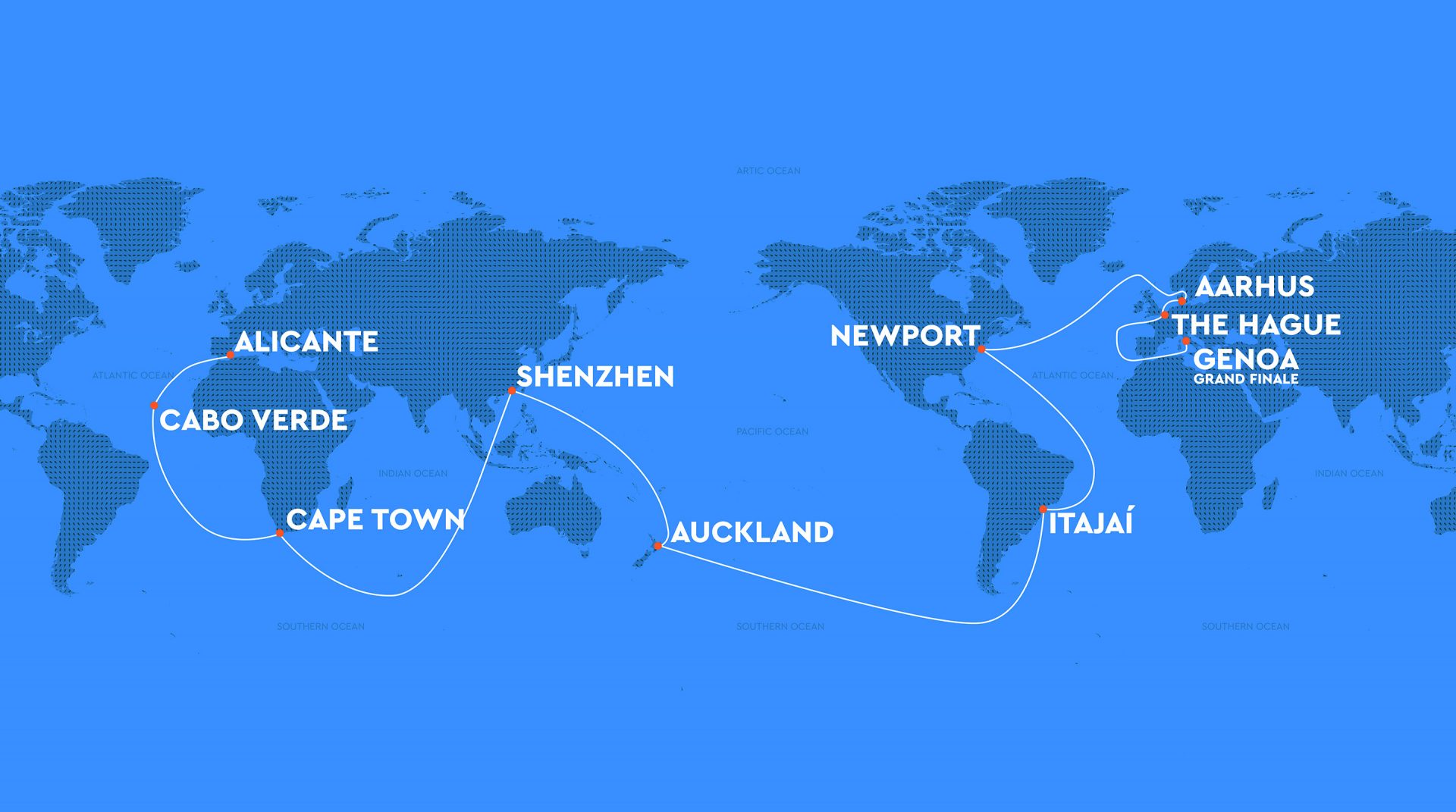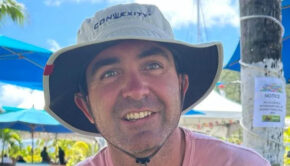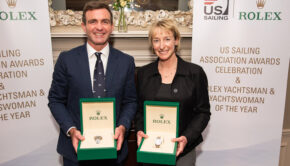Charlie Enright on the 2021-22 route
Published on April 11th, 2020
by Justin Chisholm, Yacht Racing Life
The Ocean Race skipper Charlie Enright, together with Team CEO Mark Towill, announced last September their intention to be at the start line for the next edition of The Ocean Race in 2021-2022 together with title sponsor 11th Hour Racing.
Since then, the two-time competitor has been busy learning the ins-and-outs of the IMOCA 60 class, training out of Brittany before recording a fourth-place finish in the Transat Jacques Vabre late last fall.
In the third in our series of exclusive articles aimed at finding out what past and present competitors of think of the route for the 2021-22 edition, we caught up with Charlie to gauge his views on the course for the next edition of the round the world race.
What was your immediate reaction to the confirmed route for the next edition of the race? What are the most notable elements of the course in your opinion?
It’s certainly an exciting new course, without a doubt. We’re visiting some places we haven’t been to before and that’s always something that adds a good level of interest from new fans in different parts of the world, makes it fun for the teams and adds overall excitement to the course.
Adding in Cabo Verde certainly mixes things up a bit, Australia to starboard will be interesting, and the litany of European stops that will have a different feel to them then in the past. In my opinion, finishing in the Med is probably one of the most notable changes we have on this course.
The race is shorter (estimated to be 38,000 nm) and has two less pitstops, what are your thoughts on that?
You know, those distance numbers are a bit of marketing buzz to be honest. I’m sure I’m echoing what others would say but it’s really about the distance you sail and the kind of sailing during the course that matters much more than any sort of specific number that is referred to by the race or the media.
Less pitstops generally means less operational and logistical planning for a team — so I think it’s nice that those were tightened up a bit – and it might be nice to see one or two less even in future editions. Full report.
Event details – Route – Teams – Facebook
The Ocean Race 2021-22 (formerly The Volvo Ocean Race) will be raced in two classes of boats: the high-performance, foiling, IMOCA 60 class and the one-design VO65 class which has been used for the last two editions of the race. Entries in the IMOCA 60 class will compete for The Ocean Race trophy, while those racing the VO65s will chase the Ocean Challenge Trophy.
Ten Stopovers for 14th Edition:
• Alicante, Spain: This historic Mediterranean port will host the start for the fifth consecutive edition in the autumn of 2021.
• Cabo Verde: More accustomed to having offshore teams sail by, or stop for repair, this archipelago of ten volcanic islands in the central Atlantic Ocean will become just the second African venue the race has ever visited and the first West African nation to host the event. Details.
• Cape Town, South Africa: Located on the shore of Table Bay, Cape Town, as the oldest urban area in South Africa, was developed by the United East India Company (VOC) as a supply station for Dutch ships sailing to East Africa, India, and the Far East. Located at latitude 33.55° S, it’s approximately the same as Sydney and Buenos Aires and equivalent to Casablanca and Los Angeles in the northern hemisphere. Details.
• Shenzhen, China: Located in the southeast, the city is a modern metropolis that links Hong Kong to China’s mainland. It’s known for its shopping destinations and features contemporary buildings, such as the 600m-tall skyscraper Ping An International Finance Centre, and a number of amusement parks. The city is a leading global technology hub and was one of the fastest-growing cities in the world in the 1990s and the 2000s. Details.
• Auckland, New Zealand: European, Polynesian, Asian, and strong Maori heritages give Auckland its distinctive culture. Located in the North Island of New Zealand, it is the most populous urban area in the country with an urban population of around 1,570,100. Details.
• Itajaí, Brazil: To the south of Rio de Janeiro, Itajaí was founded in the mid-19th century by German and Italian colonists, and is now the commercial centre and Atlantic port for an agricultural region drained by the Itajaí River and its tributaries. Details.
• Newport, USA: Located on Aquidneck Island, Newport is 74 miles south of Boston and 180 miles northeast of New York City. It is known as a New England summer resort and is famous for its historic mansions and its rich sailing history. It was the location of every challenge to the America’s Cup between 1930 and 1983. It is also the home of Naval Station Newport, which houses the United States Naval War College, the Naval Undersea Warfare Center, and an important Navy training center. This is the third consecutive edition of the race to stop in Newport. Details.
• Aarhus, Denmark: The course comes to the east coast of the Jutland peninsula during the spring of 2022, following a popular ‘Fly-By’ of the city during the final leg of the 2017-18 edition of the Race. Details.
• The Hague, Netherlands: This city along the North Sea coast will welcome the race for a third consecutive time, first coming as a ‘pitstop’ on the final leg of the 2014-15 edition and as the final finish port for the 2017-18 race. Details.
• Genoa, Italy: As the birthplace of Christopher Columbus, this first-time race host is Italy’s largest sea port yet remains full of grandeur as the gateway to the Riviera while offering weighty architectural heritage. Details.
Announced Entries:
• IMOCA – Team Malizia (GER)- Boris Herrmann (GER)
• VO65 – Racing For The Planet (POR)
• IMOCA – Paul Meilhat (FRA)
• IMOCA – 11th Hour Racing (USA) – Charlie Enright & Mark Towill (USA)










 We’ll keep your information safe.
We’ll keep your information safe.